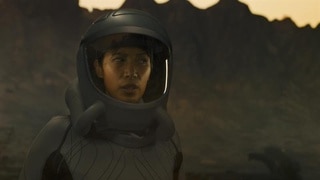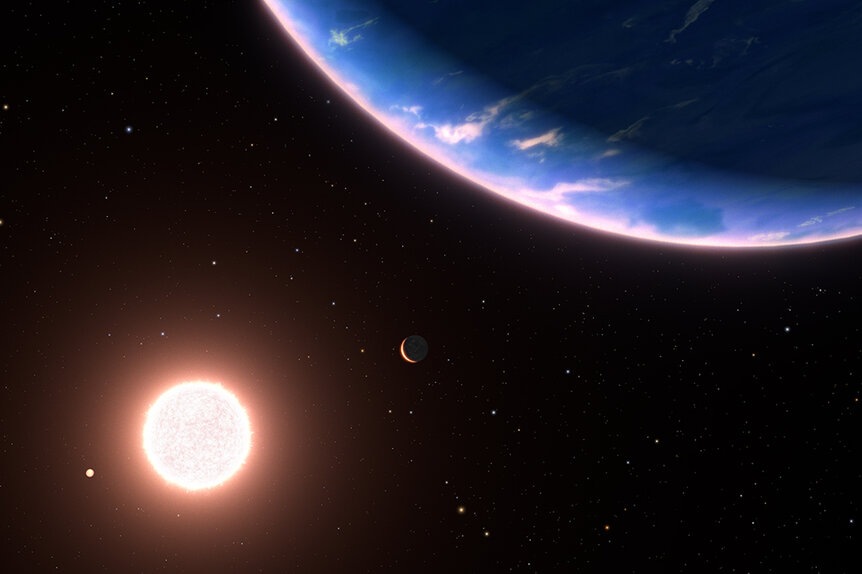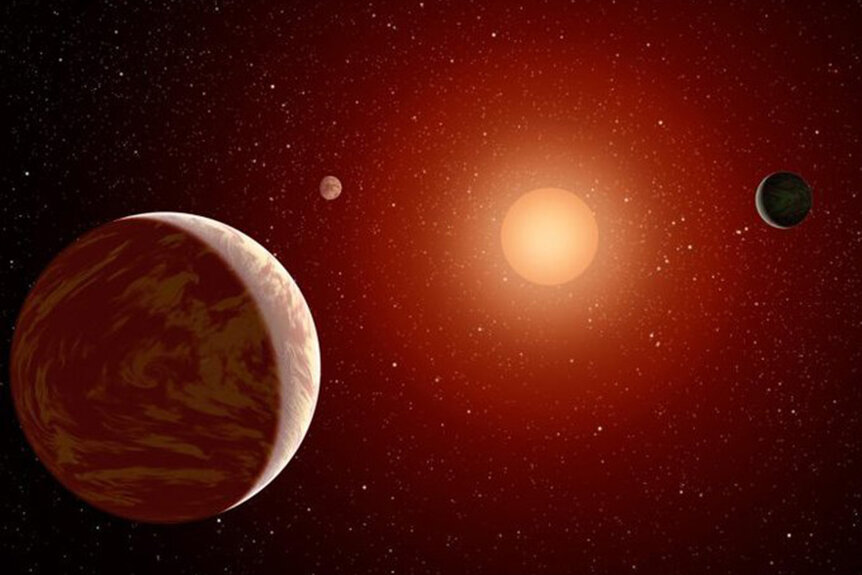Where We Would Send The Ark: The Best Exoplanets Within 25 Light-Years
Finding the most habitable exoplanets in our galactic neighborhood.
The universe is so big (Douglas Adams famously wrote, “You just won't believe how vastly, hugely, mind-bogglingly big it is”) that even our nearest stellar neighbors are trillions of miles away. The distances to exoplanets are measured not in feet or in miles, but in light-years. In SYFY’s The Ark, humanity sends the Ark One (an interstellar spacecraft carrying hundreds of explorers) to Proxima Centauri b, an exoplanet orbiting a red dwarf star about 4.2 light-years from here.
Prox b is a real place in the real universe, but it might not be the most ideal planet to visit or live on. Mostly because it’s close to its star and probably tidally locked. However, when traversing the sorts of distances we’re talking about, proximity counts for a lot.
If humanity ever does make the leap to another star system, we’re going to want to consider the length of the journey, but also the type of world we’ll find when we get where we’re going. With all of that in mind, these are a few of the confirmed exoplanets we recommend sending humanity’s future Arks to.
How many potentially habitable exoplanets are there?
NASA’s Exoplanet Archive keeps a running tally of all confirmed exoplanets, as well as candidate planets awaiting confirmation. At the time of writing, more than 5,000 exoplanets have been discovered, many of which are within cosmic sprinting distance of us, but only a few of them might be close to what we would consider comfortable.
Once you weed out the Hot Jupiters, the Mini-Neptunes, and the Ice Giants, you’re left with a small subset of terrestrial planets that are more or less Earth-like. Many of them are close to their stars and tidally locked, with one side of the planet forever facing the scorching heat of daylight. Surface temperatures on those sorts of worlds reach extreme temperatures, boiling on one side and frozen on the other. That’s probably the case for Proxima centauri b.
The Ark gets around those problems by employing advanced technologies capable of spinning up a planet through manipulation of its magnetic field. Barring those kinds of technological advancements, we’re going to have to set our space sails for worlds a little bit more like our own.
A Note on Naming Conventions
The names of stars aren’t all that dissimilar from the names of people. They take part of the names from their parent (host star) and the rest designates when they were discovered or their position in their star system.
For example, the star closest to us is called Proxima centauri. The brightest object in any star system (the star itself) is always given the designation “a,” so the full name of the star is Proxima centauri A. The first exoplanet discovered around a star is given the designation “b,” the second one is given “c,” and so on. If multiple planets are discovered around a star at the same time, then then astronomers go down the alphabet based on distance from the star. The Ark’s destination planet was the first to be discovered around Proxima centauri, so it was named Proxima centauri b. As a result of this process, it’s not uncommon to see exoplanets with very similar names.
How similar are exoplanets to the Earth?
The Earth Similarity Index (ESI) is a scale used to compare discovered exoplanets to our own home planet. Distant worlds receive a score based on their similarity to Earth in a number of categories. Considerations include radius, density, escape velocity, surface temperature, and more. There are limits, of course, to how much data we can get on distant planets with our existing instruments. Some of these values remain unknown and astronomers have to make their best estimates with the information they have.
When all of the data is tallied, exoplanets get a score ranging from 0 (no similarity to Earth) to 1 (totally Earth-like). Using that data, the Habitable Worlds Catalog lists the exoplanets with the highest probability of habitability, out of the nearly 6,000 worlds discovered so far. They identify 70 potentially habitable planets, 29 of which are likely to be rocky and have liquid surface water.
Teegarden’s Star b
Located about 12.5 light-years away, Teegarden’s Star b is one of the closest exoplanets yet discovered and it’s also among the most Earth-like. Based on initial observations, the exoplanet earned an initial score of 0.97 (near perfect) on the ESI scale. Later observations provided more data and dropped the score to about 0.9. For comparison, the ESI of Proxima centauri b is 0.86.
Teegarden’s Star b sits in the habitable zone around a red dwarf star. It orbits its star at a distance of only 0.0252 astronomical units (AU), roughly 2.5% the distance between the Earth and the Sun. Being so close to its star, the planet orbits quickly, once every five days.
If the Earth were that close to the Sun, we’d be burnt to a crisp in an instant, but Teegarden’s Star is smaller, only about 9% the mass of the Sun, and produces less light and heat. Astronomers estimate a 60% chance of liquid water on the surface and only a 3% chance of a significant atmosphere. It turns out that 90% as good, in a cosmic sense, is still pretty bad.
Gliese 1002 b and c
The star Gliese 1002 (also known as GJ 1002) is about 16 light-years from here. It’s a quiet red dwarf with no evidence of significant solar flare activity. That’s good news, because long-term solar flare activity at close proximity has a way of chewing off a planet’s atmosphere.
Gliese 1002 b was discovered in 2022, alongside a planetary partner called Gliese 1002 c, both of which orbit inside the star’s habitable zone. GJ 1002 b is about 1.08 Earth masses and only 1.03 times the radius of Earth. Surface temperatures are estimated to be about 10 Fahrenheit. That’s not exactly comfortable by Earth standards but it’s practically tropical when compared with most of the rest of the universe. GJ 1002 c is a little bit bigger, with about 1.36 Earth masses and it orbits every three weeks.
Ross 128 b
Another world that gets a bunch of play in The Ark, Ross 128 b is a rocky planet about 1.4 times the mass of the Earth. It orbits its star (Ross 128) at a distance of 0.0496 AU (about 4.6 million miles, compared to Earth’s 93-million-mile distance to the Sun).
At that distance, it makes an orbit every 10 days, so you’d have to celebrate a birthday every week and a half. It receives about 38% more starlight at the surface than Earth and astronomers expect surface temperatures in the right range for liquid surface water. That’s assuming there’s an atmosphere, without one the relatively high stellar radiation would blow the water away.
In the end, the very best planet for us is the one we’ve already got. It’s got a perfect score on the Earth Similarity Index and it’s 0 light-years away. While the call of adventure sings like a siren song from space, it’s worth considering that any technology capable of making an exoplanet more livable could also be used on Earth. It will always be easier for us to clean our own planetary room and set things aright then it will be to pack up and leave town. For all its faults (or, rather, our faults) Earth is the only place in the universe that we know of with breathable air, a comfy climate, and television.
Watch new episodes of The Ark Wednesdays at 10/9c on SYFY. Catch up on Season 1 on Peacock.





















































